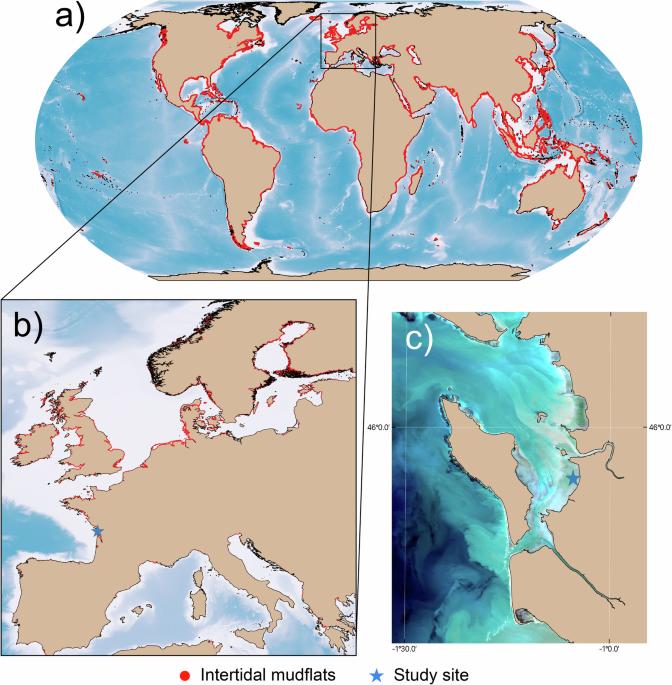Warming could shift the phenological responses of benthic microalgae in temperate intertidal zones
IF 8.1
1区 地球科学
Q1 ENVIRONMENTAL SCIENCES
引用次数: 0
Abstract
Intertidal mudflats colonized by sediment-dwelling microphytobenthos deliver a wide range of ecosystem services. Here we simulate the response of microphytobenthos, located on a temperate tidal mudflat along the French Atlantic coast in Northwestern Europe, exposed to changes in light, temperature, and sea level conditions predicted by the Intergovernmental Panel on Climate Change. Without sea level rise, microphytobenthos benefit from the balancing effect of net primary production fluctuations, experiencing an increase in winter and a decrease in summer. Under the worst emissions scenario, microphytobenthos bloom up to 14 days earlier in spring and 5 days later in fall, thereby extending the low-level microphytobenthos biomass period by an additional 3 weeks in summer. Sea level rise reduces light exposure leading to a pronounced decline in microphytobenthos under the medium-low emissions and worst emissions scenarios. We provide evidence that the anticipated warmer climate and sea level rise will have an impact on microphytobenthos, potentially triggering cascading effects across the entire food web and disrupting ecosystem services. Under the worst-case emission scenario, benthic microalgae from temperate mudflats are projected to bloom earlier in spring and later in the fall, and lack of light due to sea level rise may lead to overall decline, according to a coupled physical-biological model and climate scenarios.

气候变暖会改变温带潮间带底栖微藻类的物候反应
潮间带泥滩由生活在沉积物中的小型底栖生物提供广泛的生态系统服务。在这里,我们模拟了位于欧洲西北部法国大西洋沿岸温带潮汐泥滩上的微囊底栖动物对政府间气候变化专门委员会预测的光照、温度和海平面条件变化的响应。在海平面不上升的情况下,微囊底栖生物会从净初级生产波动的平衡效应中受益,经历冬季的增加和夏季的减少。在最糟糕的排放情景下,春季微囊底栖动物开花期提前 14 天,秋季推迟 5 天,从而使夏季低水平微囊底栖动物生物量期延长 3 周。在中低排放和最差排放情景下,海平面上升减少了光照,导致底栖微囊藻明显减少。我们提供的证据表明,预期的气候变暖和海平面上升将对微囊底栖生物产生影响,并可能引发整个食物网的连锁反应,破坏生态系统服务。根据物理-生物耦合模型和气候情景,在最坏的排放情景下,温带泥滩的底栖微藻类预计将在春季提前开花,秋季推迟开花,而海平面上升导致的光照不足可能会导致整体衰退。
本文章由计算机程序翻译,如有差异,请以英文原文为准。
求助全文
约1分钟内获得全文
求助全文
来源期刊

Communications Earth & Environment
Earth and Planetary Sciences-General Earth and Planetary Sciences
CiteScore
8.60
自引率
2.50%
发文量
269
审稿时长
26 weeks
期刊介绍:
Communications Earth & Environment is an open access journal from Nature Portfolio publishing high-quality research, reviews and commentary in all areas of the Earth, environmental and planetary sciences. Research papers published by the journal represent significant advances that bring new insight to a specialized area in Earth science, planetary science or environmental science.
Communications Earth & Environment has a 2-year impact factor of 7.9 (2022 Journal Citation Reports®). Articles published in the journal in 2022 were downloaded 1,412,858 times. Median time from submission to the first editorial decision is 8 days.
 求助内容:
求助内容: 应助结果提醒方式:
应助结果提醒方式:


